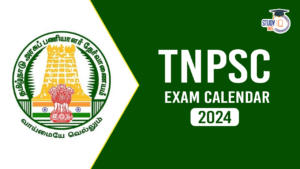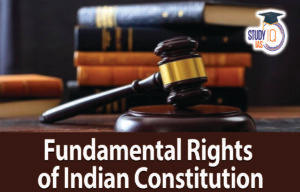Daily Current Affairs for UPSC 2022
Q) Recently seen in news, the ‘State of Global Water Resources 2021’ report is released by which one of the following organization:
- UN-Water
- World Water Council
- World Meteorological Organization
- United Nation Development Programme
Daily Current Affairs for UPSC – 1 December 2022
Explanation:
- Option (3) is correct: The World Meteorological Organization (WMO) released its first State of Global Water Resources 2021. The report aims to support monitoring and management of global freshwater resources in an era of growing demand and limited supplies. It gives an overview of river flow, as well as major floods and droughts. It provides insights into hotspots for changes in freshwater storage and highlights the crucial role and vulnerability of the cryosphere (snow and ice). As per the report, currently, 3.6 billion people face inadequate access to water at least a month per year and this is expected to increase to more than 5 billion by 2050. 2021 was ranked between the fifth and seventh warmest year on record (not concluded yet) with the global annual mean temperature of 1.11 ± 0.13 degree C above the 1850–1900 pre-industrial average, despite prevailing La Niña conditions. Impacts of climate change are often felt through water – more intense and frequent droughts, more extreme flooding, more erratic seasonal rainfall and accelerated melting of glaciers – with cascading effects on economies, ecosystems and all aspects of our daily lives. Between 2001 and 2018, UN-Water reported that 74% of all natural disasters were water-related.
Q) With reference to Sangai deer, consider the following statements:
- It is a subspecies of brow-antlered deer endemic to the state of Manipur.
- Loktak Lake’s floating wetlands are the only habitat for the endangered Sangai deer.
- It is accorded the same level of protection as Hangul under the Wildlife (Protection) Act, 1972.
Which of the statements given above are correct?
- 1 and 2 only
- 1 and 3 only
- 2 and 3 only
- 1, 2 and 3
Explanation:
- Statement 1 is correct: Sangai deer is a rare sub species of brow antlered deer found only in Manipur. Sangai faces threat from steadily degenerating habitat of phumdi as a result of continuous inundation and flooding caused due to artificial reservoir. Water quality of the reservoir is degrading due to pollution and stoppage of nutrient supply. There is also invasion of non-native plants like Paragrass. Sangai also faces threats of disease from the livestock, inbreeding depression and poaching. It is included in Appendix 1 of the Convention on International Trade in Endangered Species of Wild Fauna and Flora.
- Statement 2 is correct: Sangai deer’s habitat is restricted to Keibal Lamjao National Park, which includes the floating wetlands (phumdis) of Loktak lake. It is listed as ‘Endangered’ in IUCN Red List. The sangai is identified under the Ministry of Environment, Forest and Climate Change funded Endangered Species Recovery Programme that is executed by the Wildlife Institute of India.
- Statement 3 is correct: Sangai deer has been part of Schedule I of the Indian Wild Life (Protection) Act, 1972. Hangul, the state animal of Jammu& Kashmir, is restricted to the Dachigam National Park near Srinagar. The Hangul is placed under Schedule I of the Indian Wildlife (Protection) Act, 1972 and the J&K Wildlife Protection Act, 1978. Thus the Hangul and Sangai deer are accorded same level of protection in India.
Q) Consider the following statements about the Group of 20 (G-20):
- The G-20 was founded after the 2007 global financial crisis to develop international economic cooperation.
- The G-20 agenda solely focuses on improving global macroeconomic stability and trade relations.
- Argentina, Italy, Mexico, and Saudi Arabia are members of the group.
Which of the statements given above is/are not correct?
- 1 and 2 only
- 2 only
- 2 and 3 only
- 3 only
Explanation:
- Statement 1 is incorrect: The G-20 was founded in 1999, after the Asian financial crisis, as a forum for the Finance Ministers and Central Bank Governors to discuss global economic and financial issues. The G20 was upgraded to the level of Heads of State/Government in the wake of the global economic and financial crisis of 2007, and, in 2009, was designated the “premier forum for international economic cooperation”.
- Statement 2 is incorrect: The G20 Summit is held annually, under the leadership of a rotating Presidency. The G20 initially focused largely on broad macroeconomic issues, but it has since expanded its agenda to inter-alia include trade, climate change, sustainable development, health, agriculture, energy, environment, climate change, and anti-corruption. The group does not have a permanent secretariat and each annual meeting is supported and coordinated by the Troika – the past, the current and the incoming presidency. For the 2023 G20 summit, the Troika consists of Indonesia, India and Brazil.
- Statement 3 is correct: Group of Twenty (G20) comprises 19 countries (Argentina, Australia, Brazil, Canada, China, France, Germany, India, Indonesia, Italy, Japan, Republic of Korea, Mexico, Russia, Saudi Arabia, South Africa, Türkiye, United Kingdom and United States) and the European Union. The G20 members represent around 85% of the global GDP, over 75% of the global trade, and about two-thirds of the world population.
Q) With reference to Acquired Immunodeficiency Syndrome (AIDS),consider the following statements:
- AIDS is caused by a RNA genome based
- The infected person become immuno-deficient due to decrease in T-lymphocyte count.
- The enzyme linked immuno-sorbent assay (ELISA) test is used to detect AIDS.
Select the correct answer using the code given below:
- 1 only
- 2 only
- 1 and 3 only
- 1, 2 and 3
Explanation:
- Statement 1 is correct: Acquired Immunodeficiency Syndrome (AIDS) is caused by the Human Immuno deficiency Virus (HIV), a member of a group of viruses called retrovirus, which have an envelope enclosing the RNA genome. After getting into the body of the person, the virus enters into macrophages where RNA genome of the virus replicates to form viral DNA with the help of the enzyme reverse transcriptase. This viral DNA gets incorporated into host cell’s DNA and directs the infected cells to produce virus particles. The macrophages continue to produce virus and in this way acts like a HIV factory.
- Statement 2 is correct: HIV enters into helper T-lymphocytes, replicates and produce progeny viruses. This leads to a progressive decrease in the number of helper T-lymphocytes in the body of the infected person. Due to decrease in the number of helper T lymphocytes, the person starts suffering from infections that could have been otherwise overcome such as those due to bacteria especially Mycobacterium, viruses, fungi and even parasites like Toxoplasma. The patient becomes so immuno-deficient that he/she is unable to protect himself/herself against these infections. HIV is a sexually transmitted infection (STI) and can also spread by contact with infected blood. It can also be spread from mother to child during pregnancy and breastfeeding.
- Statement 3 is correct: A widely used diagnostic test for AIDS is enzyme linked immuno-sorbent assay (ELISA). Treatment of AIDS with anti-retroviral drugs is only partially effective. There is no cure for HIV/AIDS, but medications can control the infection and prevent progression of the disease.
Q) Consider the following statements about the favorable conditions for heatwaves in India:
- Presence of moisture in the upper atmosphere
- When the actual maximum temperature of a region is more than or equal to 45 °C.
- If maximum temperature of a station in hilly areas is at least 30 °C or higher.
Which of the statements given above is/are correct?
- 1 only
- 1 and 2 only
- 2 and 3 only
- 3 only
Explanation:
- Statement 1 is incorrect: A Heat Wave is a period of abnormally high temperatures, more than the normal maximum temperature. Favorable conditions for Heat wave are as follows:
- Transportation / Prevalence of hot dry air over a region (There should be a region of warm dry air and appropriate flow pattern for transporting hot air over the region).
- Absence of moisture in the upper atmosphere (As the presence of moisture restricts the temperature rise).
- The sky should be practically cloudless (To allow maximum insulation over the region).
- Large amplitude anti-cyclonic flow over the area. Heat waves generally develop over Northwest India and spread gradually eastwards & southwards but not westwards (since the prevailing winds during the season are westerly to northwesterly).
- Statement 2 is correct: Heat wave is declared on the basis of departure from normal that is , departure from normal of 4.5 to 6.4 degree Celsius is considered a heat wave; if the departure from normal is >6.4 degree Celsius it is considered a severe heat wave. However based on Actual Maximum Temperature, when the actual maximum temperature is greater than or equals to 45 degree Celsius, it is considered a heat wave. Thus when the actual maximum temperature is greater than or equals to 47 degree Celsius it is declared a Severe Heat Wave.
- Statement 3 is correct: Heat wave is considered if maximum temperature of a station reaches at least 40 degree Celsius or more for Plains and at least 30 degree Celsius or more for Hilly regions. If above criteria met at least in 2 stations in a Meteorological sub-division for at least two consecutive days and it declared on the second day.


 Current Affairs 24th April 2024 for UPSC...
Current Affairs 24th April 2024 for UPSC...
 TNPSC Exam Calendar 2024, Check Exam Dat...
TNPSC Exam Calendar 2024, Check Exam Dat...
 Fundamental Rights of Indian Constitutio...
Fundamental Rights of Indian Constitutio...

















